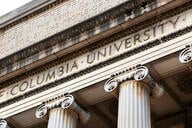You have /5 articles left.
Sign up for a free account or log in.
The University of Texas at Dallas enrolled about 3,100 freshmen this academic year, a number that has been going up by 5 to 7 percent a year for a decade.
With the university boosting its academic offerings, and admission to the University of Texas at Austin becoming more and more difficult, competitiveness at Dallas has been going up as well. A third of students are in the top 10 percent of their high school classes, and 25 percent are in the top quarter. The middle 50 percent of SAT scores is from 1210 to 1430.
While some institutions struggle with diversity, UT Dallas has seen its academic profile go up while also admitting large numbers of students from diverse groups. White students make up only 37 percent of undergraduates. The admissions trends are headed in the right direction, from UT Dallas's perspective, and the university has the capacity to eventually serve 3,600 freshmen a year -- and plans to hit that target with gradual increases.
But this year, the university is making a major change in its admissions policy, one that is likely to change the admissions decisions on only a few dozen applicants a year, but that officials said is needed to assure quality.
For the last 10 years, the university offered two ways to be admitted automatically. One is to graduate in the top 10 percent of a high school in Texas. Texas law requires such admissions, regardless of test score, and the third of students who graduate in the top deciles at their high schools are admitted this way. The university couldn't change that policy. But the other way the university was admitting applicants automatically was if they had a 1200 on the SAT. Increasingly, the vast majority of freshmen were being admitted via one of the two automatic pathways.
Hobson Wildenthal, executive vice president at the university, said in an interview that UT Dallas first adopted the automatic test score policy 10 years ago, at the request of admissions officers. They reported that they thought the institution would be more popular with prospective students if admissions reps could offer automatic admission to those with such scores. Since almost all applicants with that test score were then admitted, it made sense. "We were happy to do it," he said, and enrollment growth followed.
But a few years ago, faculty members started to complain about some admitted applicants -- students who generally weren't working hard and weren't succeeding.
Wildenthal said that the university studied student success levels as related to admissions criteria. What the university found was that a few dozen students a year (a small number, for an institution as large at UT Dallas) seemed to fit a pattern. Their 1200-plus SAT scores got them in, but they tended to be in the bottom half of their high school classes. "They weren't succeeding, not because they weren't bright, but for other reasons," he said, such as not being diligent students.
The university will now, through holistic admissions, review those who apply who aren't in the top 10 percent, looking at test scores still, but also class rank, rigor of curriculum, activities, essays and more.
Wildenthal said that he expects most of those with SAT scores of at least 1200 to still be admitted. But he said holistic review will spot those who shouldn't be.
UT Dallas is not trying to become hypercompetitive. "We don't want to turn away qualified students," Wildenthal said. "We still want to grow, but we want to grow with good students."




